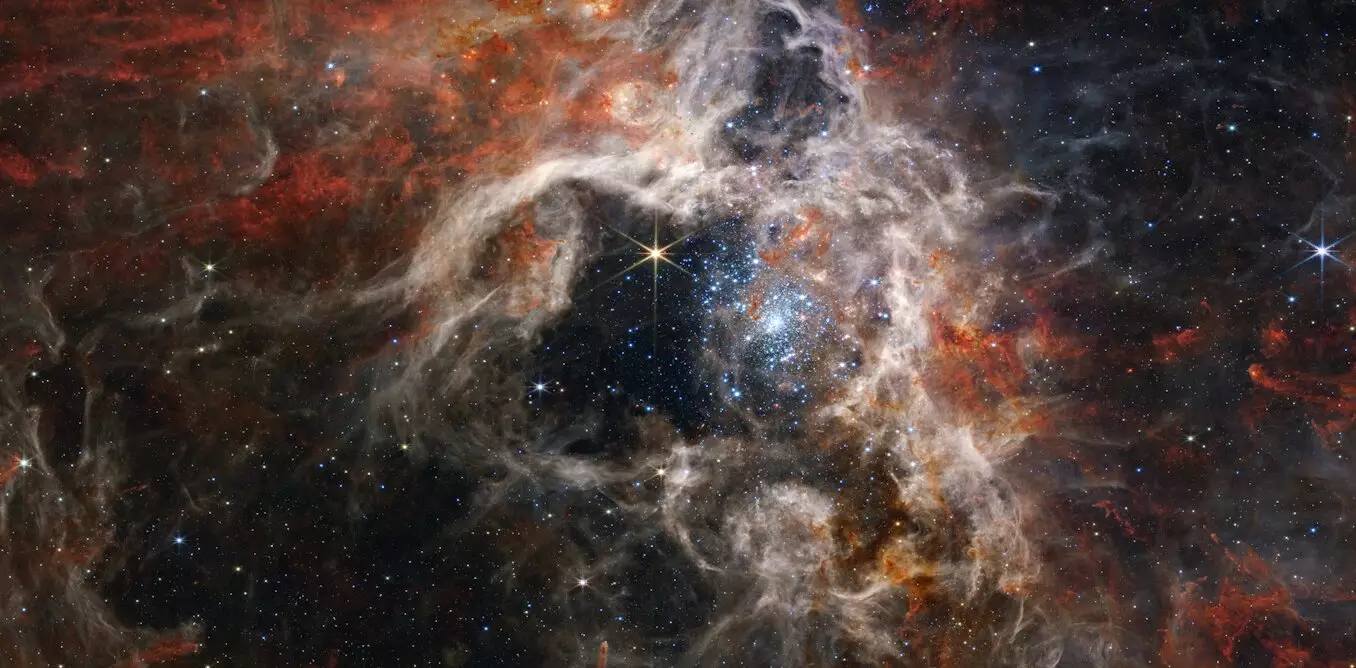The universe, a vast expanse that has endured for approximately 13.7 billion years, often gives an impression of unwavering stability. Yet, beneath this façade lies an intriguing predicament: the fundamental particle known as the Higgs boson may hold the key to potential cosmic instability. Recent research, soon to be published in *Physical Letters B*, elucidates theories regarding primordial black holes, revealing how these enigmatic entities could hypothetically induce events that lead to the very end of our universe as we know it.
Understanding the Higgs boson is key to comprehending this cosmic narrative. For laypersons, the Higgs boson might appear as just another esoteric particle, yet it is paramount to the structure of matter itself. The Higgs field, associated with this particle, is akin to an omnipresent water bath, enveloping the universe and bestowing mass upon elementary particles through interactions within this field. Disturbingly, the implications of our Higgs field’s energy state suggest that it is unlikely to be at its most stable form, hinting at a latent volatility that, should it shift, could unravel familiar laws of physics.
Phase Transitions and Their Cosmic Significance
One of the most fascinating aspects of the Higgs field is its potential for a phase transition, which could radically alter the nature of reality. To visualize this, consider water transitioning into steam. In a similar manner, if the Higgs field were to shift to a lower energy state, it would create “bubbles” of altered physics that fundamentally change interactions of particles. Such a cosmic bubble could alter the masses of electrons and disrupt the structure of protons and neutrons—essentially erasing the foundation of atomic matter. The ramifications of this could lead to an unraveling of the universe as we recognize it.
Although recent data from the Large Hadron Collider indicates the Higgs boson’s instability could be a real concern, there’s little cause for alarm—at least not within our lifetimes. Scientists generally categorize our universe as “meta-stable,” suggesting that an overarching end is improbable in the near future. Thus, although the possibility of Higgs-induced doom remains, it is concealed beneath layers of time, presenting itself as a distant fantasy rather than an imminent threat.
Quantum Mechanics and the Role of External Energy
The strange world of quantum mechanics introduces yet another twist to this cosmic tale. The Higgs field, subject to incessant quantum fluctuations, occasionally nudges towards potentially catastrophic state changes, albeit in statistically rare circumstances. However, this landscape shifts dramatically when external energy sources, particularly robust gravitational fields or hot plasma, come into play. In the presence of such energetic phenomena, the likelihood for the Higgs field to form destabilizing bubbles increases, heightening concerns about primordial black holes’ roles during the universe’s formative moments.
These primordial black holes, theorized to have emerged from density variations in the early universe, add even more complexity to our cosmic understanding. While traditional black holes originate from stellar collapses, primordial variants could be minuscule—light enough to weigh less than a gram. Their predicted existence stems from theoretical models attempting to explain the rapid inflationary period after the Big Bang. However, testing their existence is fraught with difficulties, as Stephen Hawking’s seminal work in the 1970s elucidated how black holes evanesce over time, emitting radiation (Hawking radiation) as they lose mass.
The Fractured Nature of Hotspots and Their Implications
As these primordial black holes evaporate, they generate localized hotspots of energy across the universe. These hotspots, much like impurities in a fizzy drink, catalyze Higgs field bubbling. Consequently, they pave the way for potential instability by energizing the Higgs field. Yet, intriguingly, our ongoing existence suggests an absence of such black holes, at least in a capacity strong enough to destabilize the fabric of spacetime. The implications are profound: prevailing models of cosmology that predict these primordial black holes may need re-evaluation and reassessment.
The research unveiled in the forthcoming publication takes a daring stance—suggesting that if we were to find traces of these primordial black holes through ancient radiation or gravitational waves, it might indicate complex protective mechanisms surrounding the Higgs boson from these bubbling events. This could hint at yet undiscovered particles or forces that safeguard our universe from its potential demise.
The Unending Quest for Cosmic Knowledge
The intricacies of the Higgs boson and its interactions with the universe offer a compelling narrative steeped in uncertainty and intrigue. Each revelation deepens our understanding of both the subatomic and cosmic scales, underscoring the perpetual quest for knowledge in the field of physics. As we unravel more about the forces that govern the cosmos, the anticipation builds: What profound discoveries lie just beyond the horizons of our current understanding? The dance of particles, forces, and the fabric of the universe continues, hinting at adventures yet to unfold in the realms of science.


Leave a Reply